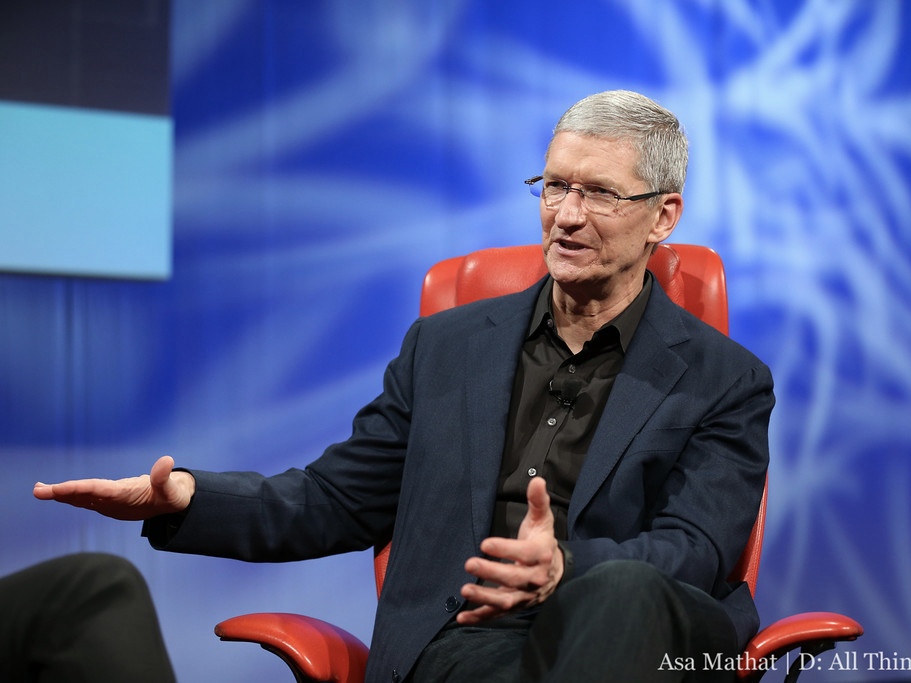The explosion in iPhone-replacement demand many Wall Street analysts are predicting for the iPhone 8 won’t happen, according to analysts at Deutsche Bank. They believe that Wall Street’s expectations for Apple are far too high and they struggle to see where the predicted iPhone 8 sales will come from.
Behind this so-called “supercycle” is “a powder keg of a dramatically aging installed base,” analysts at Cowen said last October. And in January Bernstein estimated that the installed base entering the iPhone 8 cycle will be 80% larger than it was entering the strong iPhone 6 cycle.
But in a note to investors on Monday that was seen by Business Insider, Deutsche Bank analysts Sherri Scribner, Adrienne Colby, and Jeffrey Rand wrote: “We believe investors will be disappointed by iPhone growth in FY-18 and FY-19.”
Deutsche Bank’s analysts believe that the market has become overly optimistic on sales for the upcoming iPhone 8, which is due to be released this autumn. They think that the market is ignoring the fundamental challenges Apple faces in the smartphone market, which include:
- saturation in mature markets elongating refresh cycles declining share plus increased competition in China and a growing secondary market.
Apple needs the iPhone 8 to sell more than any other iPhone
Apple needs the iPhone 8 to be a success. The company has been going through a period of declining revenues and the iPhone remains its most lucrative product by far and it will be many years before any of Apple’s other projects are big enough to take over from the iPhone. Analysts predicted a supercycle for the iPhone 7 too but sales didn’t live up to their expectations. Now, there’s a very real risk that the supercycle will fail to show up again for the iPhone 8, which will raise serious questions about Apple’s future.
The iPhone 6 and 6 Plus cycle in 2015 was the real supercycle, according to the analysts, who wrote that "everything went right for the iPhone 6 cycle." Sales went well for Apple due to a number of advantages that will not repeat including a bigger screen and the addition of China Mobile as a new carrier.

"That cycle saw peak iPhone shipments of 231M in FY-15, a shipment level the company has not been able to repeat," wrote Scribner, Colby, and Rand.
"Given most smartphones are now refreshed on a roughly 2.7 year cycle, we think FY-18 should be measured against FY-15," they continued. "This cycle and our installed base estimates suggest Apple could ship about 230M iPhones in FY-18. However, Street expectations are modeling shipments of 244M units, implying an additional 13M iPhones shipments beyond refresh."
The analysts said they have no idea where the additional 13 million iPhone additional new iPhone buyers will come from because 65% of smartphone shipments are for phones priced below $300 (£233), and the smartphone market is largely saturated.
The smartphone market is also seeing much slower growth today than it was back in 2015, as the chart below demonstrates.

Apple has not said anything about the new iPhone but there are a number of rumours out there about what the device will be like.
- There might be augmented reality features It might not be called the iPhone 8 - instead it might be called the iPhone X or iPhone 10 It could have a fingerprint sensor on the back of the phone or no fingerprint sensor at all It will have faster chips and more storage It could have a dual camera on the back A battery life of around nine hours It could have wireless charging
Speculation is mounting that the next iPhone could cost more than $1,200 (£930) and the device's price could hinder sales. "Generally, when prices go up, demand goes down," wrote the analysts. "A scenario where prices go up and demand goes up seems highly unlikely in our view."

